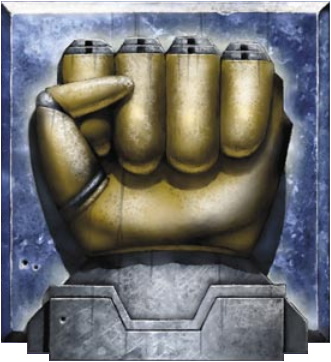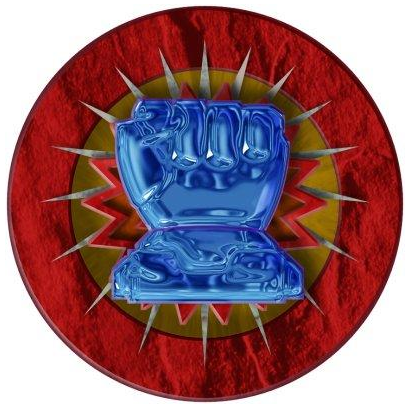War of 3039
This article or section is in a state of significant expansion or restructuring. You are welcome to assist in its construction by editing it as well. If this article or section has not been edited in several days, please remove this template. If you are the editor who added this template and you are actively editing, please be sure to replace this template with {{in use}} during the active editing session. Click on the link for template parameters to use.
This article was last edited by 98.185.235.63 (talk | contribs) 13 years ago. (Update timer) |
The War of 3039 was a relatively minor conflict that involved the Federated Suns and Lyran Commonwealth (as the Federated Commonwealth), versus the Draconis Combine.
Background
In the Fourth Succession War, the alliance between House Davion and House Steiner had allowed the Federated Suns to deliver a shattering blow to the Capellan Confederation. Prince Hanse Davion decided to attempt to duplicate this success almost a decade later against the Draconis Combine. Since Lyran Commonwealth Archon Katrina Steiner had pledged not to prosecute any more wars, she stepped down months before the beginning of the war in favor of her daughter, Archon-designate Melissa Steiner.
However, the Combine had realized such an attack to be a logical consequence of the Fourth Succession War, and had been preparing for it for the past years. The differences between the Combine in 3039 and the Capellans in 3028 were legion, and the strategic situation was decidedly different: This time, Davion did not have the advantage of having double agents in the highest ranks of the enemy military. The Combine military (DCMS) had also recuperated from the Fourth Succession War and the Ronin Wars much faster than anyone had anticipated, owing in part to a technological renaissance brought about by the Helm Memory Core. New 'Mech designs such as the Hatamoto-Chi, the Daboku and the CGR-1A9 Charger variant had been created in preparation for the expected attack.
Furthermore, Gunji-no-Kanrei Theodore Kurita had created a neutral buffer state along two thirds of his realm's border with the Steiner realm by granting rebellious border worlds their freedom and allowing the Free Rasalhague Republic (FRR) to form. On the sidelines, this had forced House Steiner to also commit numerous contested worlds on their side of the border to the new state, thus nullifying their gains in the previous war. ComStar had actively supported the formation of the FRR and provided the DCMS with BattleMechs from their own stocks as an incentive, including (by error or by design) lostech equipment that had not been seen in the Inner Sphere for decades, if not centuries.
The war
The attack was apparently quite unimaginative, carried out with a conservative strategy that mostly relied on strength of numbers to exploit the Combine's perceived lack of fighting equipment. Theodore Kurita answered with a bold bluff. The Combine fought a delaying action, committing mostly conventional units to bog down the attackers while strong forces were committed to Operation Orochi, a quick counter-attack that captured several worlds including Quentin, an important 'Mech factory site. Operation Orochi was a gamble because it stretched the Combine's defenses to the limit and completely stripped rearward areas of any combat equipment, effectively exposing the Combine's flank to the onslaught. However, the bluff worked and the swift counterattack created the illusion of a much stronger military than the DCMS actually was at the time, augmented by the appearance of vintage Star League era equipment and entirely new BattleMech designs. It succeeded not only in forcing the attackers on the defensive, drawing units scheduled for assaults to defense assignments and thereby upsetting the invasion timetables; made insecure by these unforseen developments, Hanse Davion aborted the offensive and called an end to the War in 3040. It would be eleven years before he would find out that he fell for Theodore's bluff.
Aftermath
The failure of the LCAF and AFFS to properly coordinate their offensive led to the decision to integrate the military forces of the two nations well before they officially became one nation. House Kurita also won a symbolic victory with their conquest of Quentin where Independence Weaponry produced the Davion-favorite Victor. Following the loss of that factory world, the AFFC had to import their Victors from the St. Ives Compact.
Notes
The War of 3039 is notable for being the first conflict in decades, if not in centuries, where vintage Star League-era technology provided by ComStar as well as new or rediscovered technologies were employed on any significant scale (discounting the use of HPG Fax "black boxes", and rare individual cases during the Fourth Succession War where double heat sinks, Triple Strength Myomer and the EW Equipment were employed in their experimental stages).
Listen-Kill Missiles saw their first widespread deployment in this conflict. However, the Draconis Combine not only reverse-engineered the new technology and used them against the attackers within very short time; they were also quick to develop and distribute an ECM package to their frontline units that negated the effect of the L-K technology. When the technology was finally ready for mass-production in 3042, the ubiquity of the ECM technology had already rendered it largely useless.
References
Bibliography
- 20-Year Update
- Historical: War of 3039
- Blood Legacy (Novel)
- Heir to the Dragon (Novel)






